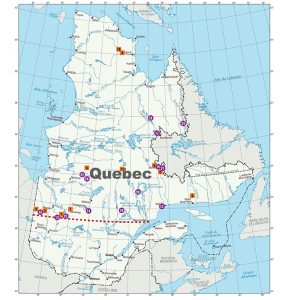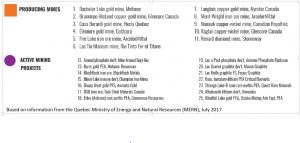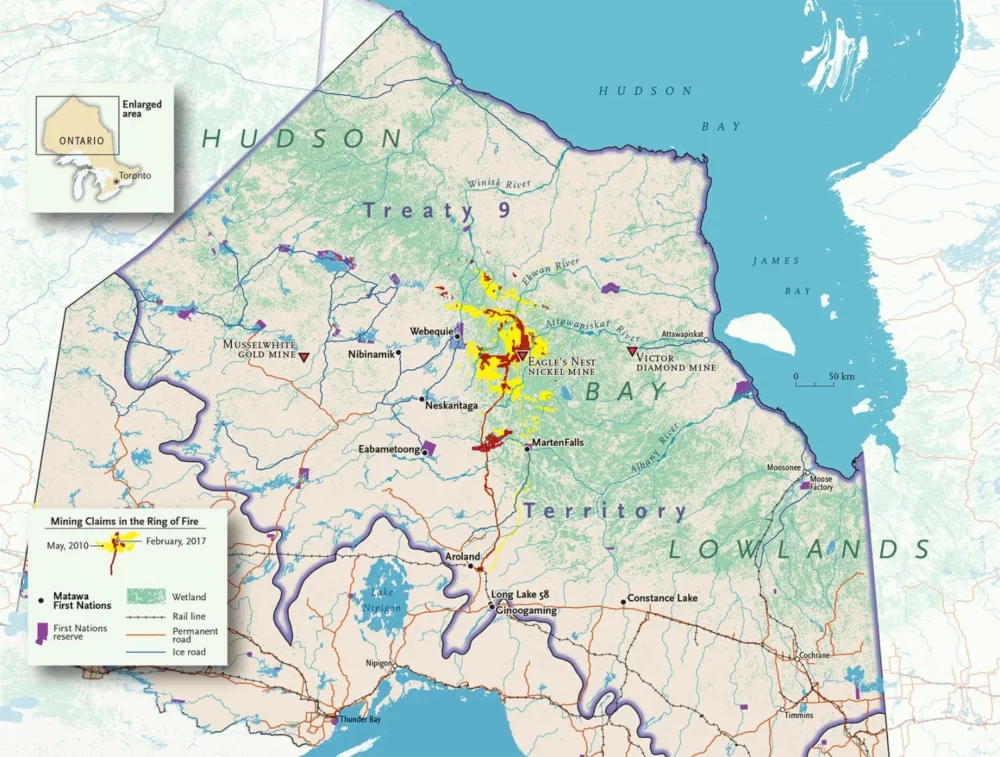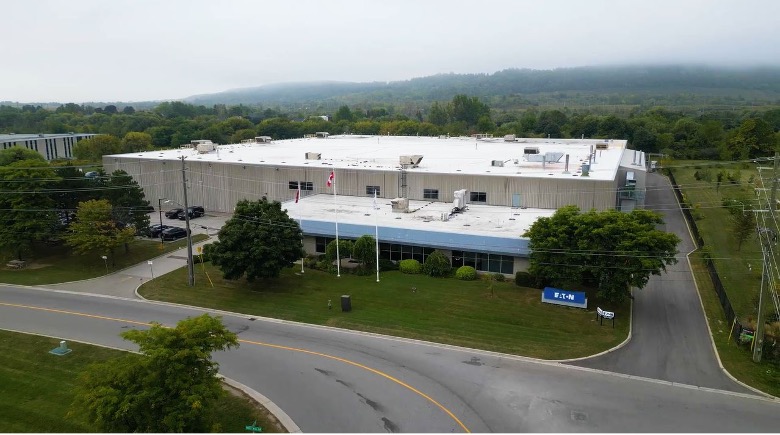Plan Nord pointing the way

 Calling it the “project of a generation” then-Quebec Premier Jean Charest launched Quebec’s ambitious Plan Nord in May 2011. He promised to invest more than $80 million in support of mining, energy and forestry projects over 25 years.
Calling it the “project of a generation” then-Quebec Premier Jean Charest launched Quebec’s ambitious Plan Nord in May 2011. He promised to invest more than $80 million in support of mining, energy and forestry projects over 25 years.
A line was drawn across the province at the 49th Parallel from north of Rouyn-Noranda to Baie-Comeau. Plan Nord was to generate $14 billion in revenue and 20,000 jobs a year. It offered a new business model that was to build roads and improve the lives of the northern residents.
The next year, Charest imposed university tuition hikes. His move set off a round of strident protests, and his Liberal Party lost the election of 2012. Plan Nord languished.
When the Liberals under Phillippe Couillard won a majority in the 2014 general election, Plan Nord was relaunched as outlined in Bill 11. The plan calls for expenditures of $2.7 billion between 2015 and 2040.
Bill 11 included new funding of $25 million for a feasibility study on building a 20-milltion t/y rail line from the Labrador Trough 300 km to Point Noire (a boon for iron ore miners).
Montreal-based Canarail is carrying out the study. A further $50 million was promised to expand the Gaz Metro liquefied natural gas plant so supply projects in the Plan Nord area (including the new Renard diamond mine).
New was the creation of the Société du Plan Nord (SPN) mandated to co-ordinate the efforts of the public and private sectors under terms of Plan Nord. SPN and its subsidiaries will be responsible for awarding contracts that meet the criteria for the area. Funding for SPN will come from the Fonds Plan Nord supported by the Quebec government to $170 million, $10 million of which will come from Hydro-Québec annually.
The Quebec government has set out certain priorities intended to boost the resource sectors. It will promote the responsible development of resources in the north, diversify the range of resources developed, promote private investment, and increase the processing of resources in the area. All the while it will encourage the diversification of local and regional economy with support for all sizes of enterprises at any stage of development.
The sum of these goals will be to maximize economic benefits in the Plan Nord area and the rest of the province.
Specifically for the mining sector, Plan Nord outlined five goals: 1) gather basic geological knowledge, 2) clean up and restore former exploration sites, 3) communicate and promote discussions between all stakeholders, 4) support the development of diverse projects such as diamonds, apatite, ilmenite, graphite and rare earths, and 5) take a stake in companies mining or processing minerals on public land.
Notably missing from Plan Nord is support for the uranium industry. There are no such mines in the province, but the potential exists.
The original moratorium on exploration, development or mining of uranium projects was announced in 2013. Quebec’s environmental regulation agency (BAPE) recommended in July 2015 after a year-long review, that uranium mining be banned at least temporarily or even permanently.
Supported by indigenous communities and environmental activists, BAPE noted the dual problems of the long half-life of radioactive materials and the lack of long term studies of techniques to store such material.
Leaving aside the problematic uranium sector, Plan Nord is making measurable progress toward its goals.
The building of an extension of Labrador Ave. in Baie- Comeau has begun as the starting point of the future route 389.
One project that will benefit from a new all-weather road is the Lake Gueret project of Mason Graphite located about 300 km north of the town.
SPN, Tata Steel Minerals Canada and Quebec Iron Ore (a Champion Iron subsidiary) have agreed to develop and manage industrial facilities at Pointe-Noire in Sept-Îles. The $220-million investment will create facilities that can handle the largest iron ore carriers in the world.
Iron ore from the Labrador Trough will be shipped from Pointe Noire to global customers. Construction began in July on a $15-million conveyor that gives access to the multi-user dock in the port of Sept-Îles.
By April 2017, the Quebec government said it could link as many as 7,350 jobs to Plan Nord activities. Mining construction activities generated 5,400, mining operations provided 1,600, and direct investment by the SNP made 350 more available.
Quebec and the Canadian governments are investing almost $265 million for major repairs to James Bay Road. The project covers 620 km, more than half of which will be resurfaced.
Replacing culverts and road safety devices will extend the life of the road, reduce long term maintenance costs, and bring more goods and services to remote communities.
A commercial greenhouse pilot project, co-ordinated by SPN, will be built in Kuujjuaq. It involves spending $5 million over three years. The greenhouse will be warmed by heat from a waste-to-energy plant. The project is aimed at two goals: 1) providing fresh fruit and vegetables for residents and 2) solving the problem of open air waste burning.
In August, SPN announced it will support eight local initiatives in Nunavik (the northernmost region of Quebec, not to be confused with the territory, Nunavut). These include a symposium on school success, a study of the Arctic char in Deception Bay, business collaboration missions, community land use, hiring of a social worker, renewable energy, and the feasibility of a fish farm.
As laid out, Plan Nord is a very broad-based undertaking.
The exploration, development and mining industry has much to contribute to the economic expansion of the region. The forestry, oil & gas, as well as infrastructure construction will also contribute.
But do not let us lose sight of the great progress that can be made by indigenous and local communities. Economic opportunity can lead to entrepreneurship, sustainable individual incomes, better transportation, lower cost nutrition, and many more benefits we in southern Canada take for granted.





Comments